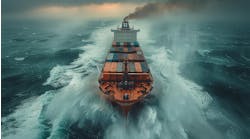On July 29 the administration announced that it has recently made investments to support the "entire American shipbuilding supply chain and enhancing the security of the global maritime environment through collaboration with our allies and partners."
The reasons for the investments are to create good-paying permanent jobs and to promote US shipbuilding competitiveness.
The following companies plan to expand or establish their operations in the United States:
HD Hyundai: Republic of Korea-based HD-Hyundai, one of the world’s largest shipbuilders, has committed to accelerate its efforts to support the U.S. Navy’s shipbuilding program through cooperative initiatives with U.S. companies and educational and vocational exchange programs. The new national Maritime Statecraft Initiative identified that a robust and skilled workforce trained to meet the Navy’s shipbuilding requirements is a national security imperative. In response, HD Hyundai is pursuing educational exchange programs with U.S. universities on shipbuilding engineering and design – and is considering a vocational training program focused on welding that will assist these efforts. The Secretary of the Navy also recently announced a new educational partnership between HD-Hyundai, the University of Michigan, and Seoul National University.
Bollinger Shipyards: The first and only shipbuilder in the United States to design and build a heavy polar icebreaker in over 50 years, Bollinger will play a critical role in the Icebreaker Collaboration Effort, also known as “ICE Pact”, and its efforts to strengthen the polar capabilities of the United States and its allies through the creation of a fleet of polar icebreakers. Bollinger is currently under contract to build three Polar Security Cutter (PSC) heavy polar icebreakers for the United States Coast Guard and has invested over $20 million in private capital in its shipyard.
Davie Shipbuilding: Canada’s largest shipbuilder intends to make a new long-term commitment to American shipbuilding. Pending final site and partner selection, this would include a major investment in a U.S. shipyard. Davie, operating continuously since 1825 from Quebec, Canada, has delivered over 720 specialized ships. It is currently building the world’s largest orderbook of heavy icebreakers for ICE Pact partner, Canada. Davie also owns Helsinki Shipyard in Finland, which has built over 50% of the world’s icebreaker fleet.
Konecranes: The Finnish-based port equipment manufacture, is announcing its plans to establish and grow a consortium of U.S. partners, including steel structure providers and other manufacturers, to build ship-to-shore (STS) cranes in the United States to serve North American ports. Konecranes is committed to growing its workforce in the United States as demand for cranes produced by trusted vendors increases. Konecranes estimates that every STS crane built in the United States will require the production of 1,500 tons of U.S.-made steel and over 100,000 labor hours for the whole value chain.
New and Ongoing Government Actions
The U.S. government has also undertaken recent action to support American shipbuilding and American shipbuilders. New and ongoing actions include:
- On July 25 the U.S. Maritime Administration within the U.S. Department of Transportation released a fact sheet that outlines the Maritime Administration’s grant and financing programs to support the U.S. shipbuilding industry and projects both U.S. government and commercial demand for American-built vessels over the next decade. The fact sheet can be found here.
- On July 22, the Secretary of the Navy announced the Michigan Maritime Manufacturing Initiative to help rebuild the maritime industrial base workforce that the Navy needs. This initiative will focus on submarine production skillsets before expanding to additional classes of vessels alongside federal, state, local, and academic partners.
- On July 11, the leaders of the United States, Canada, and Finland announced their intent to create ICE Pact. Due to the capital intensity of shipbuilding, long-term, multi-ship orderbooks are essential to the success of a shipyard. The governments of Canada, Finland, and the United States intend to leverage their own shipyards in Canada, Finland, and the United States to build polar icebreakers for their own use, as well as extend an invitation to allies and partners to purchase polar icebreakers for their needs. Over the next six months, the United States, Canada, and Finland will develop a trilateral memorandum of understanding that will outline a framework for how this arrangement is implemented in each country.
- On July 10, the U.S. Maritime Administration also announced $8.75 million in grant awards to 15 small shipyards in 12 states through the Small Shipyard Grant program. The funds will help shipyards modernize, increase productivity, and expand local job opportunities. The full list of awardees can be found here.



